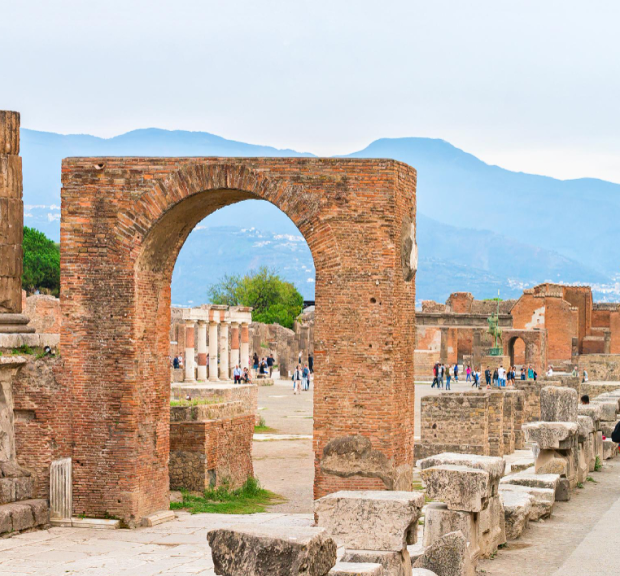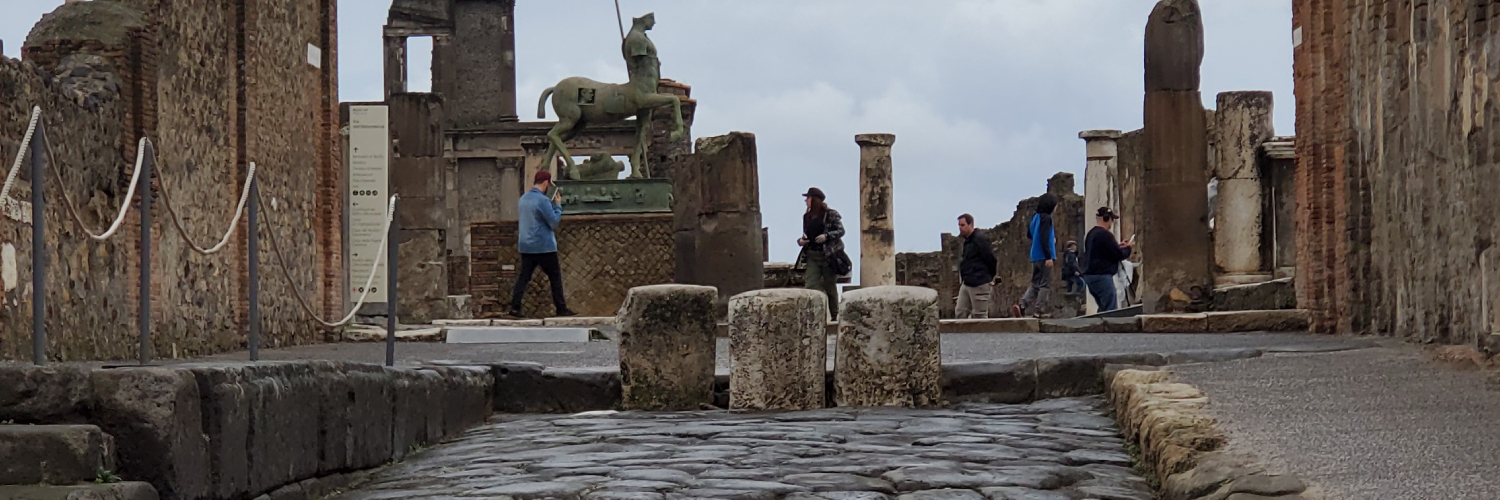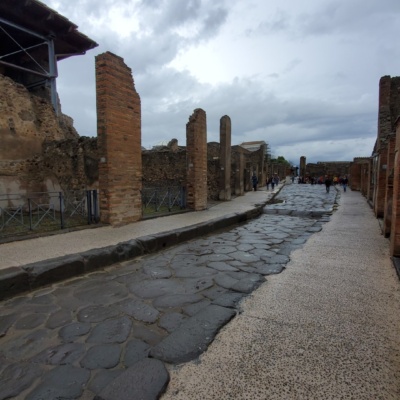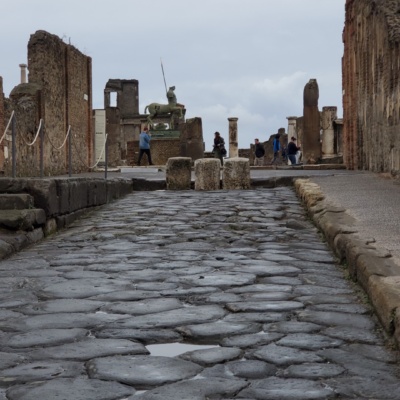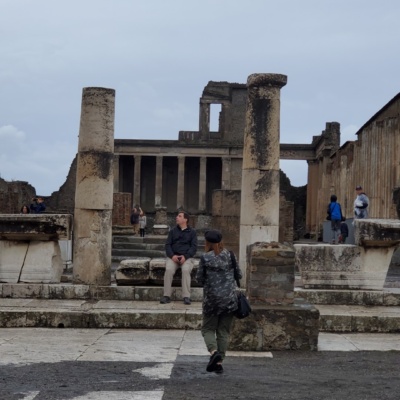Pompeii is an ancient Roman city located near modern-day Naples in Italy. It is famously known for being buried under several meters of volcanic ash and pumice following the eruption of Mount Vesuvius in 79 AD. The catastrophic eruption preserved the city remarkably well, offering an unparalleled glimpse into everyday life during the Roman Empire.
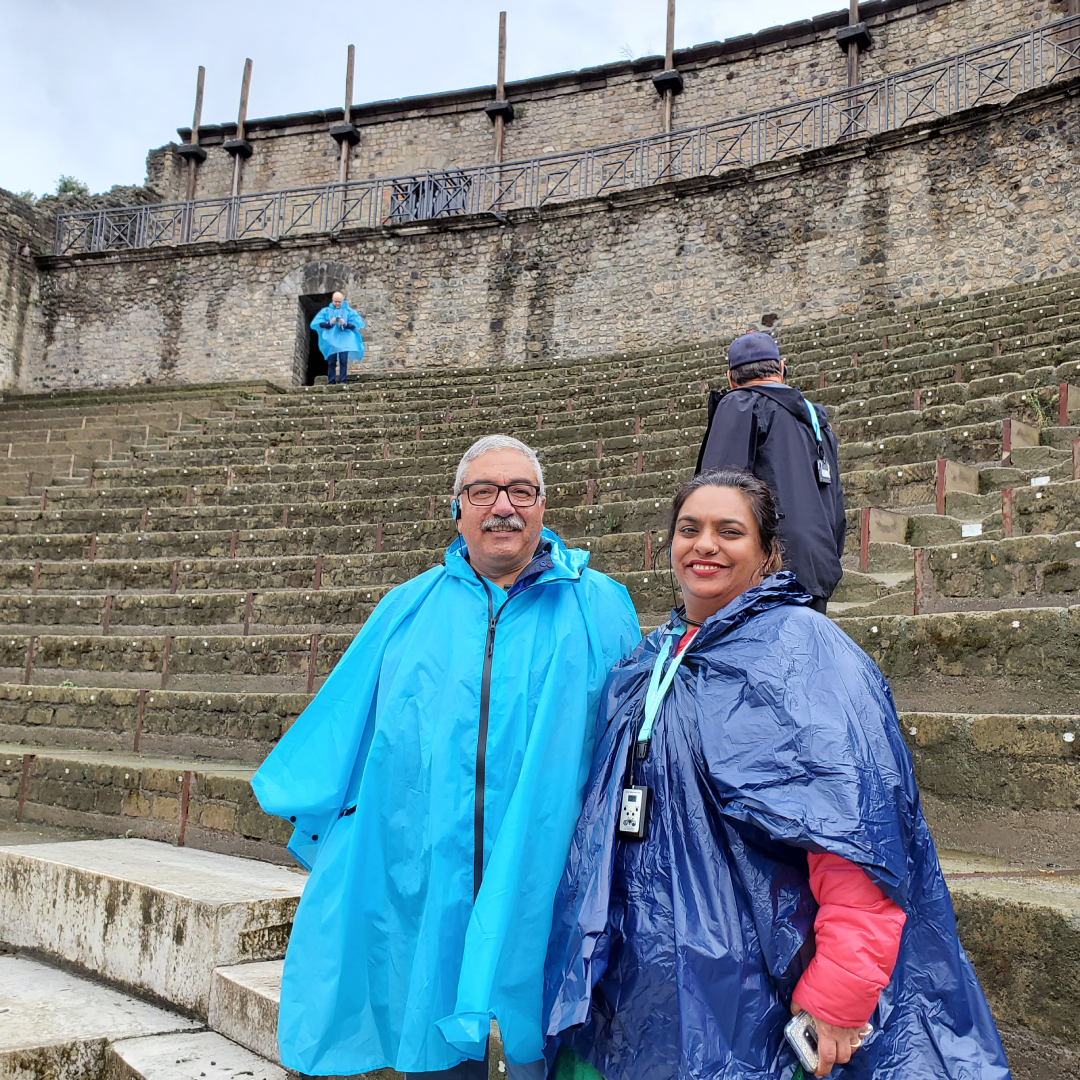
- Volcanic Eruption
On August 24, 79 AD, Mount Vesuvius erupted, burying Pompeii, along with the nearby cities of Herculaneum and Stabiae, in volcanic ash and pyroclastic material. The eruption was so sudden and intense that many residents were caught off guard and perished. The ashes also helped preserve the buildings, art, and even some of the people in their final moments. - Archaeological Excavations
Pompeii has been extensively excavated since the 18th century. The preserved ruins provide detailed insights into Roman urban life, including houses, temples, theaters, bathhouses, and shops. The city’s layout, frescoes, mosaics, and daily objects reveal a lot about Roman culture, from fashion to food and entertainment.
- Famous Attractions
Some of the most famous sites in Pompeii include: - The Forum
The city’s central square, surrounded by important public buildings. - The Amphitheater
One of the oldest surviving Roman amphitheaters. - Villa of the Mysteries.
A well-preserved villa with beautiful frescoes depicting mysterious rituals. - Plaster Casts
The casts of victims of the eruption, made by pouring plaster into voids left by decomposed bodies, are some of the most poignant and famous images from Pompeii. - Mount Vesuvius
The volcano itself is a popular tourist attraction. Visitors can hike to the summit for panoramic views of the Bay of Naples and the surrounding area, as well as see the crater. - UNESCO World Heritage Site
Pompeii, along with Herculaneum and other nearby sites, is designated a UNESCO World Heritage Site due to its historical significance and exceptional preservation.
